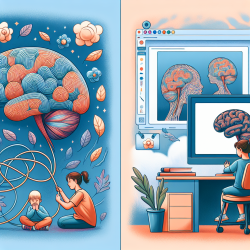Here are key findings and actionable steps practitioners can take:
Key Findings
- Symptom Prevalence: Participants reported an average of 16 symptoms each, with the most common being eyelid drooping (93%), physical fatigue (89%), and difficulty breathing (82%).
- Emotional and Social Impact: All participants experienced emotional impacts, including anxiety (82%) and depression (75%). Social functioning was also significantly affected, with many avoiding social events due to their symptoms.
- Symptom Fluctuation: Nearly all participants (96%) reported fluctuations in symptom severity, making daily life unpredictable and challenging.
- Treatment Goals: Patients emphasized the need for reduced fatigue and weakness, improved symptom stability, and minimization of emotional impacts.
Actionable Steps for Practitioners
Practitioners can enhance their online therapy services by incorporating the following strategies:
- Holistic Assessment: Regularly monitor both persistent and fluctuating symptoms to get a comprehensive understanding of the patient's condition. This includes physical, emotional, and social impacts.
- Customized Treatment Plans: Develop individualized treatment plans that address the specific symptoms and goals identified by each patient. Focus on reducing fatigue and achieving symptom stability.
- Emotional Support: Provide robust emotional support through counseling and therapy sessions to help patients manage anxiety, depression, and stress related to their condition.
- Educational Resources: Equip patients and their families with educational resources to better understand gMG and manage symptoms effectively. This includes information on lifestyle adjustments and coping strategies.
- Interdisciplinary Approach: Collaborate with other healthcare providers, such as neurologists and occupational therapists, to ensure a comprehensive care plan that addresses all aspects of the patient's health.
By integrating these strategies, practitioners can significantly improve the quality of life for patients with gMG. Understanding the lived experiences of these patients is crucial for developing effective treatment plans and providing empathetic care.
To read the original research paper, please follow this link: Understanding the Symptom Burden and Impact of Myasthenia Gravis from the Patient’s Perspective: A Qualitative Study.










